2021 was another uncertain year travel-wise, and I spent the first six months entirely in Denmark. However, I made up for it during the last six months when Europe finally opened up for travel between the countries – and I even made it outside the European borders to the Caucasus! Now it’s time to look back at the many adventures of 2021 and choose my favourite new destinations of the year!
In 2015, my favourites included the Faroe Islands, Visby in Sweden and Poland. In 2016, some of my favourites were Howth in Ireland, Taipei in Taiwan and the Gobi Desert in Mongolia. In 2017, some of my favourites were Qeshm Island in Iran, Vianden in Luxembourg and Chicago in the US. In 2018, my favourites included Moscow in Russia, Ljubljana in Slovenia and Cuzco in Peru. In 2019, my favourites included Edinburgh in Scotland, San Marino and Kulusuk in Greenland. And in 2020, some of my favourite new destinations were Stralsund in Germany, Jungholz in Austria and Ærø in Denmark.
2021 brought me to eleven countries besides Denmark, and Liechtenstein, Georgia, Armenia and Serbia were new to me. Below is a list of my favourite destinations of the year in chronological order, including only those that I visited for the first time, so places like Berlin, Vienna, Thetford in England and everywhere I visited on the Faroe Islands this year are excluded.
Albuen, Lolland, Denmark
At the far end of Nakskov Fjord on Lolland sits the 7,5 km long headland of Albuen. It separates the Langeland Strait from the fjord, and its low grassy dunes along extensive beaches provide shelter for thousands of migratory birds. Albuen is a special nature reserve which has been influenced by six hundred years of human activity, remains of which can still be seen dotted across the unique landscape. Getting there requires either a boat ride or a four-kilometre walk along a narrow isthmus! Albuen holds a lighthouse from 1958, an old pilot station, a former school, the abandoned village of Nakkehuse (now used as summer houses), the remains of a Late Medieval herring market, and a wooden cross marking the spot where a chapel once stood.
Here, you’ll find peace like nowhere else in the world.
I visited Albuen twice last year. First in March on a mission to see everything the headland has to offer, and then again in May during a boat ride on a historic post boat through Nakskov Fjord. Albuen quickly became my favourite place on all of Lolland (and among my favourites in Denmark!) because of its unique nature and rich cultural history.
PLEASE NOTE: Access to the eastern end of Albuen is prohibited between March 15th and July 15th due to breeding season. However, the rest of Albuen (including the lighthouse, Nakkehuse and the wooden cross) is open for visitors year-round.
Read more: A journey to Albuen, a unique cultural landscape at the edge of Lolland

Femø, Denmark
Femø is a small island off the north coast of Lolland with just 120 inhabitants. Unlike most of Lolland and the other nearby islands, Femø is hilly and (in my humble opinion) much more beautiful.
I went to Femø on a cold day in February with snow on the ground and sun from a blue sky. I hiked fourteen kilometres around the whole island, taking me from the harbour through the two quaint villages, along country roads past frozen lakes to snow-covered beaches, through several small settlements with historic farms, and to the 16th-century island church. I loved it so much that I just knew I had to return. In June, I finally did, and I brought the dog Kanzi along with me. We camped for a night and enjoyed two days of sun, peace and long walks in Femø’s beautiful nature.
Femø is the perfect place to go for a few days if all you want is peace, natural beauty and a look to Denmark’s past.
Read more: A day on Femø, a frosty winter wonderland
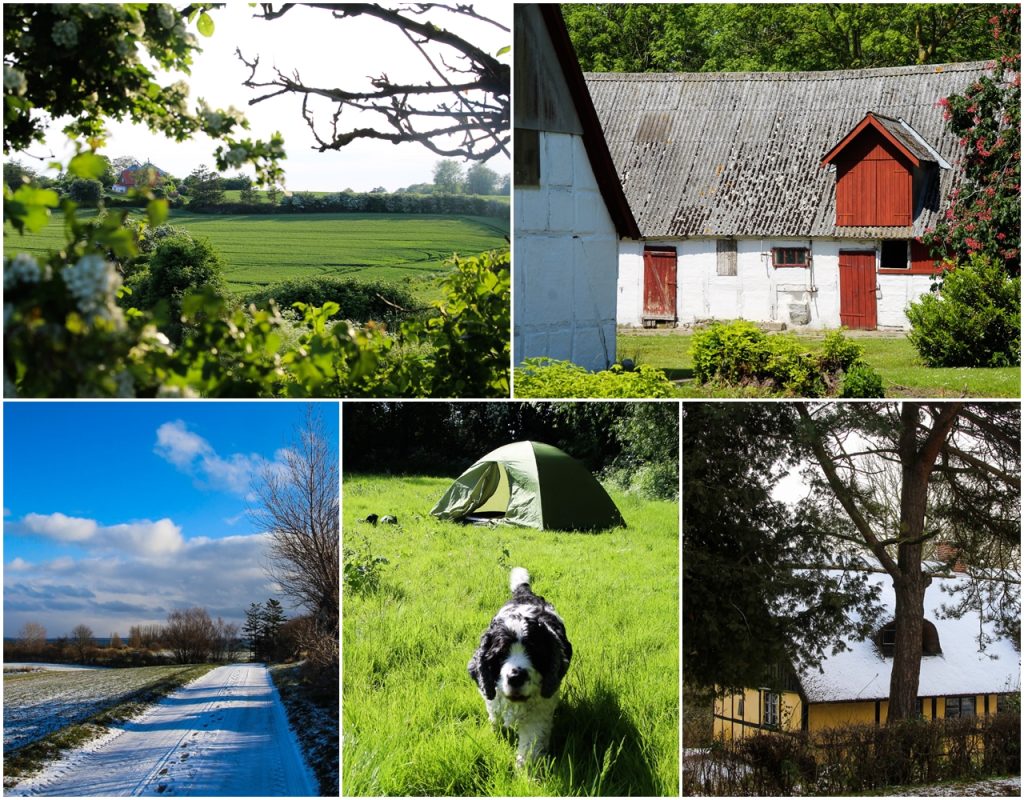
Northeast Falster, Denmark
Northeast Falster was perhaps the biggest surprise for me in 2021. I had no idea what was awaiting me when I showed up at my colleague’s farm for a long weekend in rural northeast Falster. I had no idea that I was about to be blown away by the beauty of this – for me – unknown part of Denmark.
For three days, I biked all around the region. Along small winding paths through Corselitze Østerskov, an enormous forest that stretches along the cliffs of the east coast of the island, with prehistoric monuments hiding around every corner. Through the tiny village of Hesnæs with its characteristic thatched half-timbered straw-clad houses, found nowhere else in the country (or the world, as far as I’ve seen!). Into the forest of Halskov Vænge which has no less than 72 Bronze Age burial mounds and six Neolithic dolmens. To the market town of Stubbekøbing and under the Farø Bridges at Sortsø Beach. To gorgeous Romanesque churches with colourful murals all over the interior walls. To Valdemarsegen, Denmark’s largest tree, and to the longest Neolithic passage grave in the country near Listrup. Through beautiful peat bogs and meadows at Borremosen and Barup Sø. Northeast Falster has it all – except mountains!
Read more: Over the rolling hills: A long weekend on northeast Falster
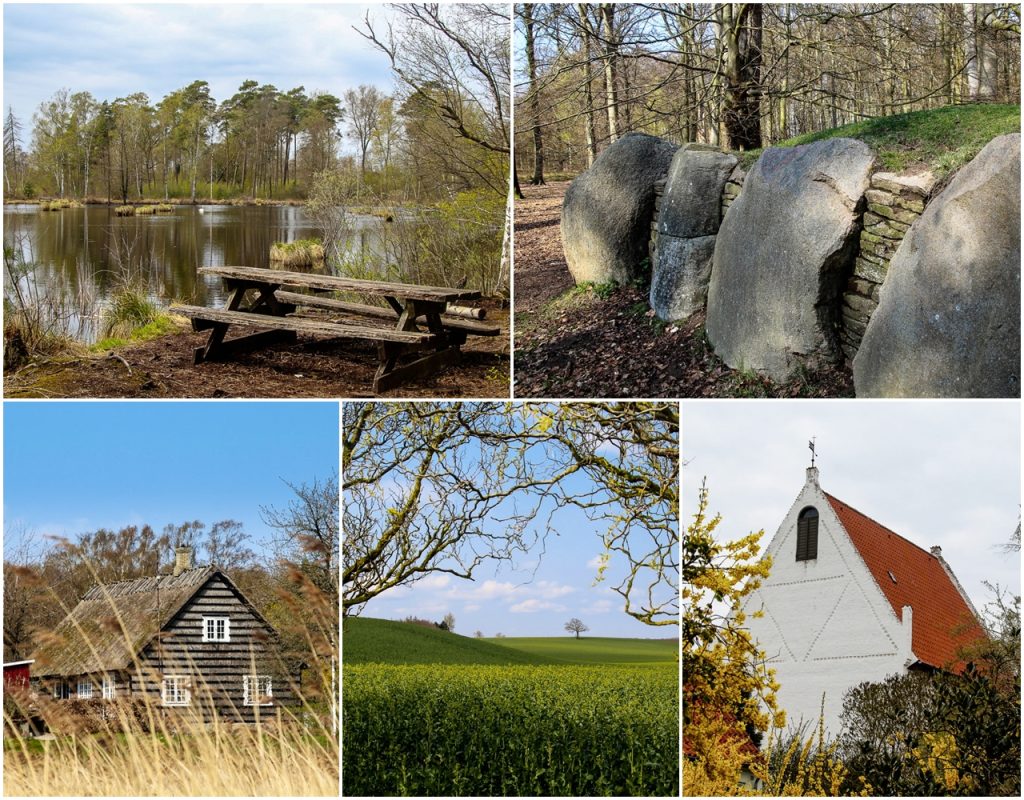
South coast of Iceland
Despite having visited Iceland four times before, I’d never set foot on the popular south coast before my July trip – and then, I was primarily going to see the Fagradalsfjall volcano erupting (which was an awesome experience!). In between volcano hikes, I spent a day and a half exploring the south coast, and I have to say that I understand why it’s so popular. However, I feel sure that if the Westfjords or East Iceland were closer to Reykjavík, those would be more popular than the south.
Although I love those areas of Iceland more, I did enjoy exploring the south. I tried to see as many highlights as possible during my short time there. I saw the tiny rainbows at the Skógafoss waterfall, walked the looong way to the Sólheimasandur plane wreck, was in awe over the beauty of Reynisfjara Beach and the cliffs of Dyrhólaey at dusk, entered a cave to find the Gljufrabui waterfall, and got splashed by the Seljalandsfoss waterfall as I walked behind it. I also climbed a small mountain above the Sólheimajökull glacier as well as a tiny mountain called Stóra Dímun, a name it shares with a Faroese island!
The south coast of Iceland is dreamy, wild and raw. And it deserves all the hype it gets – even if other parts of Iceland deserve it more.

Vorsø, Denmark
Vorsø is one of the last true wildernesses in Europe. The small island is located in Horsens Fjord, it’s a nature preserve and home to only two people, ranger Jens Gregersen and his wife. Access is very limited, in fact it’s only possible to visit Vorsø on a few guided tours per year (keep an eye on this site!), costing 200 DKK. These tours sell out quickly, but last summer, I was lucky to get two spots.
My younger brother joined me for the tour of the island which started with a crossing of the shallow waters that separate it from the mainland – on foot, of course! We enjoyed our visit immensely. Vorsø had always enchanted me, and setting foot on it was like a dream come true. We got lucky and saw two sea eagles (very rare according to our guide). We also saw several cormorants which the island is well known for, and a deer crossing the low waters.
If you’re interested in exploring a unique part of Denmark, unlike anywhere else in the country, where nature has taken over and is left to evolve as it naturally would without any human intervention, consider booking a tour to Vorsø! It’s worth every penny.
Read more: The island of Vorsø: Where wilderness prevails

Hirsholm, Denmark
Hirsholm is the only inhabited island of the remote Hirsholmene archipelago, the northernmost archipelago in Denmark – and it has just one inhabitant! The journey over is an adventure in itself. Departing from Frederikshavn in North Jutland, a small boat took my friend and I over the rough sea, waves crashing in over the boat. An hour later, we reached the tiny island.
Hirsholm has a small idyllic village, once home to a thriving community of around 200 people. All the buildings are maintained and many are used as summer houses, so the place is still full of life during the summer months.
The archipelago is a nature preserve and offers great opportunities for seal sightings as well as several different types of seabirds. Don’t forget to climb the lighthouse for a wonderful view over the archipelago, pay a visit to the village church to see its old Catholic altarpiece, and explore the two bunkers from WW2, located on either side of the island.
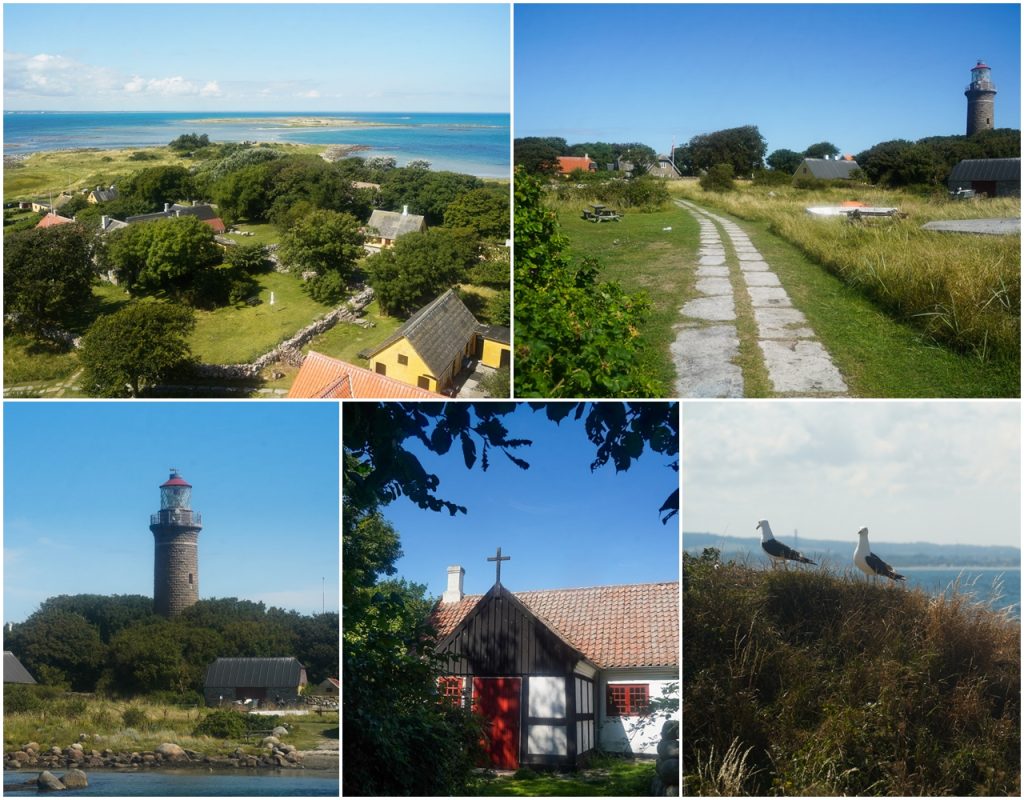
Innsbruck, Austria
Innsbruck is known as the ‘capital of the Alps’ and it’s arguably the most beautiful city in Austria. Over 130,000 people call this city home, and they have all the opportunities in the world for mountain activities year-round. Because Innsbruck is located at the foot of the mighty Alps, giving the most gorgeous backdrop to a city that I’ve seen in a long time.
I spent a day in Innsbruck with my parents and grandmother in the summer. We loved exploring the city centre with the historic bridge, Innbrücke, lovely pastel terraced houses that dot the banks of the river Inn, historic buildings that date back over 500 years, the Baroque Cathedral of St. James with its exquisite murals, and of course the city’s most famous landmark, the Goldenes Dachl – or ‘the Golden Roof’.
Don’t miss out on the view of the city from the Hungerburg funicular station – and from there, why not head up to those ragged Alpine peaks that serve as the perfect backdrop for the city?
Read more: A day in Innsbruck, the beautiful capital of the Alps
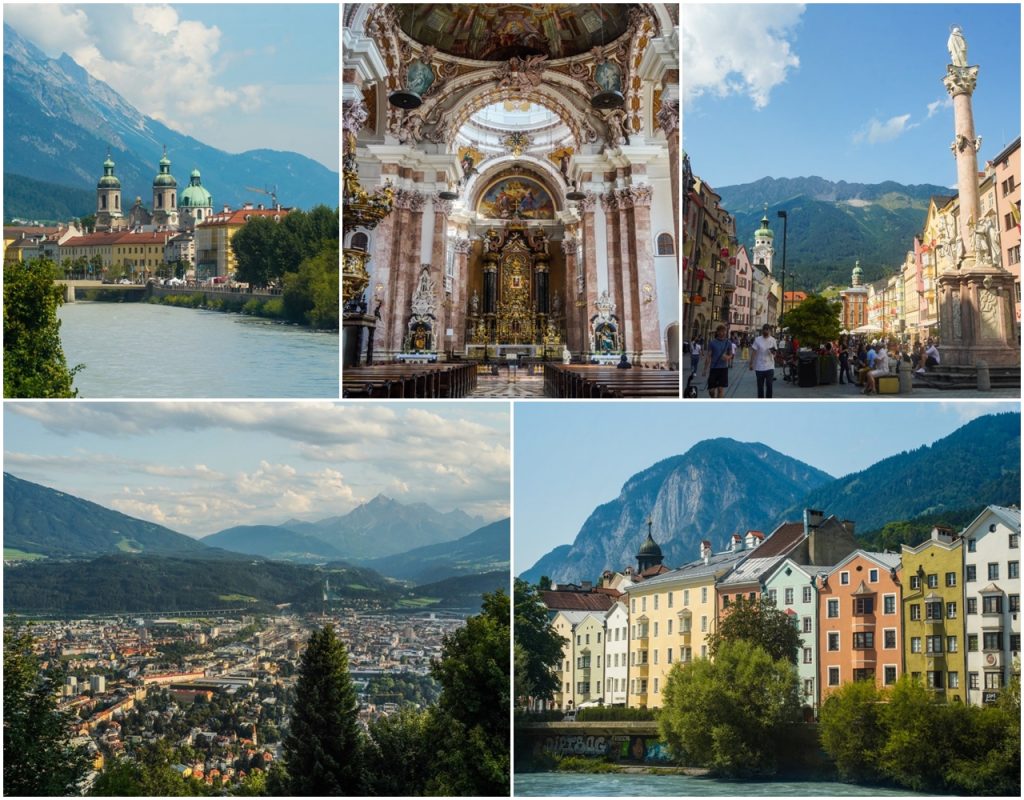
Nauders, Austria
Nauders is a small village below the Ötztal Alps near the borders to Switzerland and Italy. The mountains above the village are something of a paradise for hikers and mountain bikers.
On a sunny day in August, my mum and I set out to explore this natural paradise for ourselves. We went on a long and tough hike to a spot that would please all geography nerds out there – the very point where the borders of Austria, Switzerland and Italy meet!
On the trails, we passed by crystal clear alpine lakes, cozy wooden huts and outstanding viewpoints before reaching Dreiländergrenzstein where we stood on the border of the three neighbouring countries. Nauders showed us some of the best nature Austria has to offer – as well as a slice of Italy and Switzerland towards the end!
Read more: Where three countries meet: A hike to Dreiländergrenzstein in the Alps
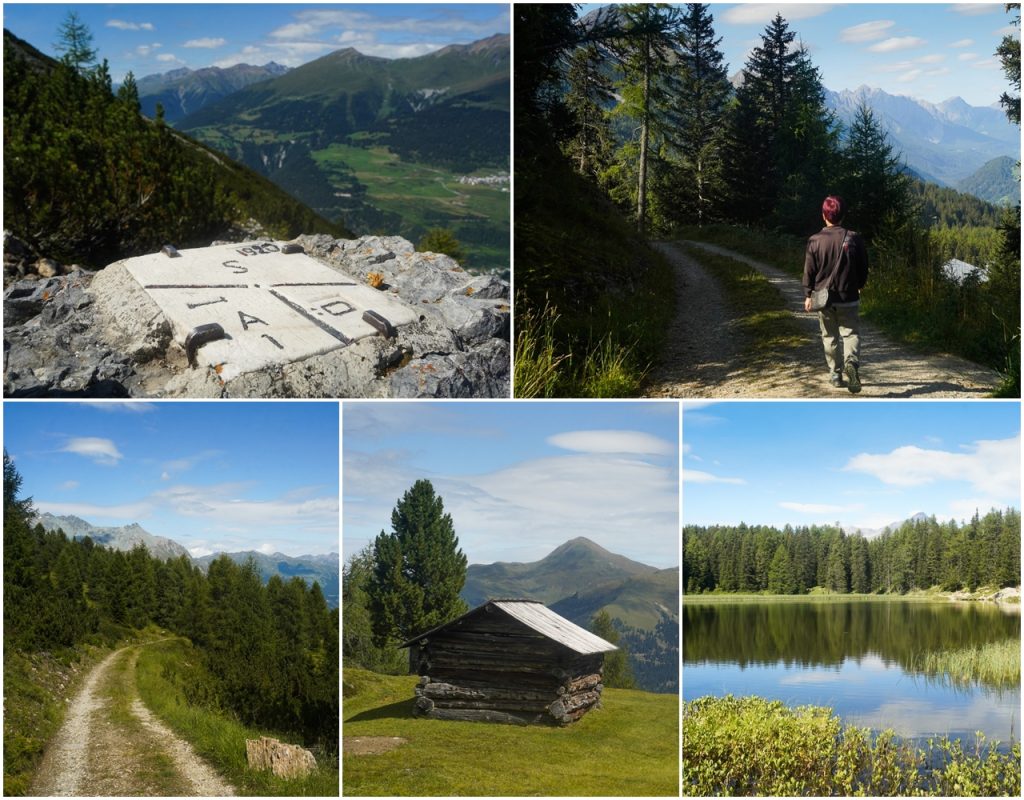
Liechtenstein
Liechtenstein is a tiny nation, nestled between Austria and Switzerland. Home to Medieval castles, picturesque villages and mountain views all over, the country is an overlooked gem in the middle of Europe.
Well, I didn’t want to overlook it any longer. During our week in Austria, my family and I went on a roadtrip to Liechtenstein with a mission to see the entire country in just one day. We managed. After all, Liechtenstein is tiny.
We started in the south, working our way north. We visited the only two intact Medieval castles, Gutenberg Castle and the royal castle in Vaduz, explored the picturesque village of Triesenberg, were engulfed in fog at a viewing tower, shopped and did some sightseeing in the capital city of Vaduz, crossed an old footbridge into Switzerland, visited a vintage store in Schaan and explored two castle ruins in Schellenberg.
Despite seeing so many places in just one day, Liechtenstein definitely still has a lot more to offer – especially if you enjoy hiking. I, for one, am not done exploring this gorgeous nation!
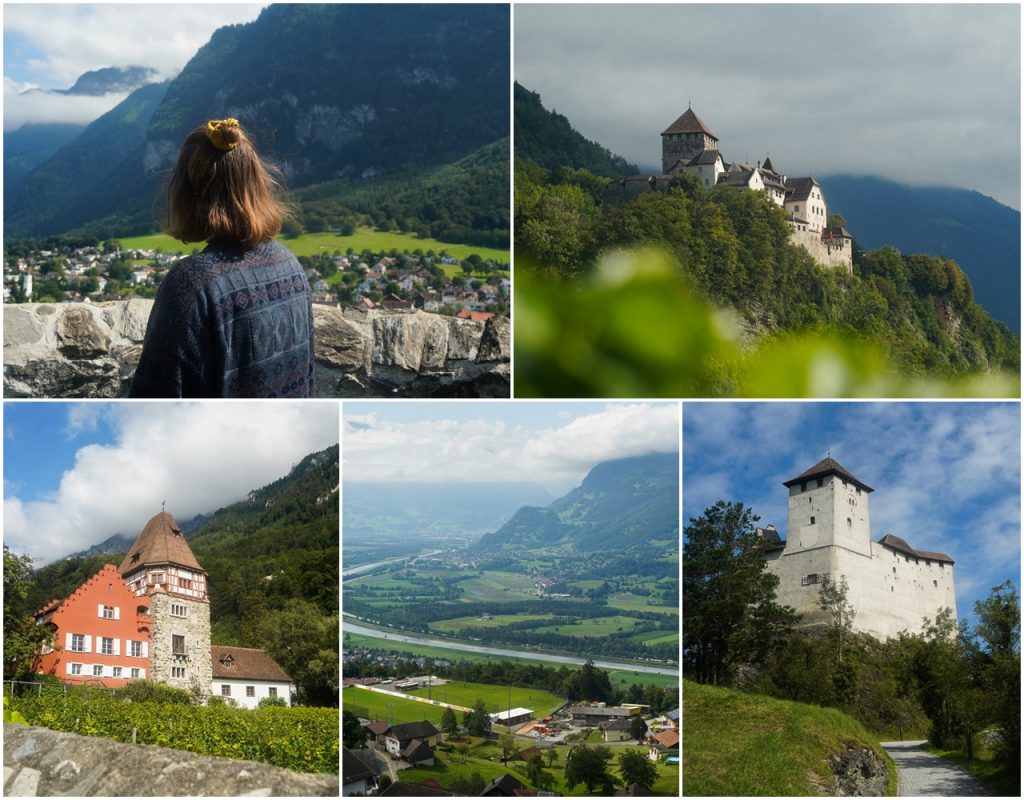
Tbilisi, Georgia
The first stop on my Caucasus adventure in the autumn was Tbilisi, the capital of Georgia, and it shaped my time in the country (and continues to shape my life today) in ways I never thought possible. And it’s all because of a hostel called Envoy Hostel which has the most incredible rooftop terrace, the best place to meet fellow backpackers in the city.
But even if you take Envoy and all the memories made there away, Tbilisi is an incredible place. The city feels like a perfect merge of Europe and Asia, owing to its history of being a point of contention on ancient international trade routes. The city is deeply fascinating, and one could spend weeks just wandering the streets and discovering all of its architectural gems.
I could spend ages listing all the places to see and things to do in Tbilisi, but the best thing really is just to get lost in the streets, eat all the lobiani and cuddle all the street cats – oh, and of course to stay at Envoy. But if you do wonder what I loved the most about Tbilisi, here are my top ten recommendations for the city:
- Explore the Blue Monastery
- Visit the majestic Holy Trinity Cathedral of Tbilisi
- Watch the sunset at the Botanical Gardens
- Enjoy the view from the statue of King Vakhtang I of Iberia
- See the view from Narikala Fortress at night
- Stroll through the Leghvtakhevi Canyon and visit the nearby sulfur baths
- Explore the Anchiskhati Basilica of St Mary, the oldest church in Tbilisi
- Relax and enjoy the terrace views at Envoy Hostel
- Get lost in the streets and just wander aimlessly
- See the view over the city from the Kartlis Deda statue
Read more: Tbilisi: A heartening first meeting with Georgia

Svaneti, Georgia
No trip to Georgia would be complete without a visit to Svaneti. The region can best be described as a dream inside a dream. It’s a fairytale landscape, astoundingly beautiful.
Svaneti is where I spent the majority of my time in Georgia. I went with A who I’d met at Envoy, first to Mestia to explore the town which is the largest in the area, and then on a mission to trek the popular four-day trail from Mestia to Ushguli where we met several fun people along the way. It’s hard to describe the beauty that we saw during those long days of hiking, so I’ll just let the pictures speak for themselves.
Just know that Svaneti is worth every hour spent in transport getting there. I know it’s far, I know it takes a whole day of travelling to reach, and I know Kazbegi is much more convenient to visit, but had I visited Kazbegi after Svaneti, I would have been sorely disappointed.
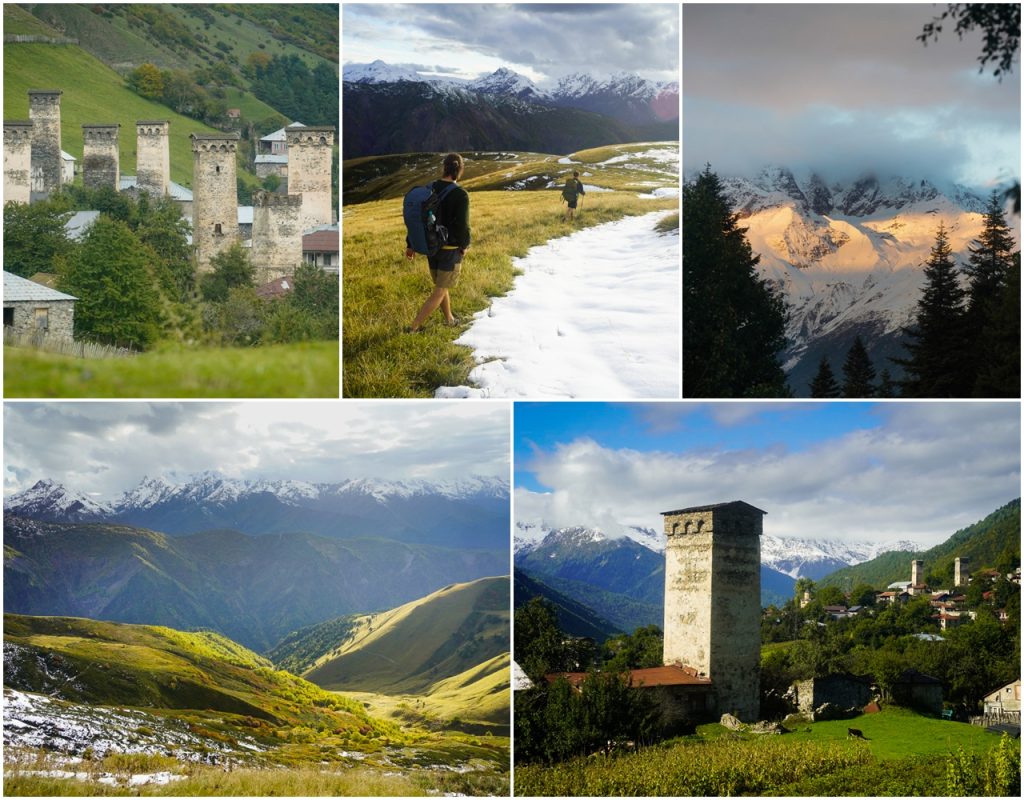
Novi Bečej, Serbia
This one entered the list, not so much because of the beauty of the town, but because of the experiences had there and the memories made there. Still, there is a certain charm to the flat rural part of Serbia that surrounds Novi Bečej, a town home to just 13,000 people in the north of the country.
I was there to work on archaeological prospections of nearby prehistoric sites with a team of archaeologists from Kiel, so I didn’t spend much time exploring Novi Bečej, except for our one day off which I spent out and about from sunrise till sunset.
Novi Bečej is located on the banks of the river Tisa which provides the prettiest views in the town. Novi Bečej is no feast for the eyes (with the exception of the river), but there’s a certain beauty to be found amongst its many dilapidated buildings. However, it’s once you get outsite the city and explore the countryside that the truly interesting places show up. One of these places is Arača, a medieval Romanesque church ruin, one of the oldest of its kind in the area. Another is Slano Kopovo, a salty freshwater depression in an ancient meander, one of the last preserved salt marshes in Serbia, and one of the most important bird habitats in the country.
There’s something about Novi Bečej, and I’ve only just started discovering what it is.
Read more: Two weeks in Novi Bečej: Life in a small town in rural Serbia
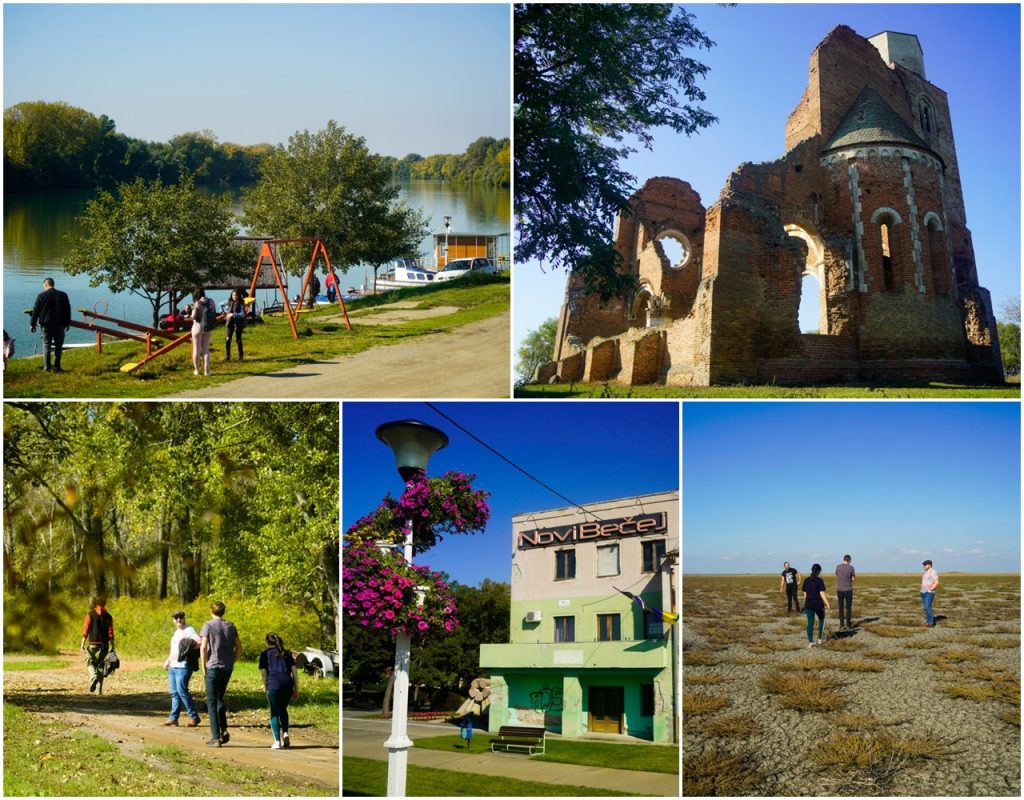
Bergen, Norway
Bergen is Norway’s second-largest city, and apparently one of the rainiest in all of Europe. Not that I noticed it much, despite going there for ten days in November to visit my best friend. I got lucky. Most days were cloudy without rain, and some were even sunny!
Bergen is known for its natural beauty, being surrounded by rugged mountains. Thus, it’s the perfect city to visit if you fancy a mix of city life and hiking in beautiful nature (if you don’t mind rain, that is).
Bergen’s most famous sight is the Hanseatic wharf, Bryggen, a UNESCO World Heritage Site, and alone worth the trip to the city. But there’s also much else to see in Bergen. Explore the Medieval Bergenhus fortress. Visit Bergen Cathedral and St Mary’s Church, the oldest existing building in the city. Discover Bergen’s many museums (hint: the natural history museum is amazing!). Spend a day out at the open-air museum, Hordamuseet. And don’t forget to go hiking – there are trails for hikers of all levels, and the views will not disappoint!
Read more: Experiences in Bergen that will make you love the city, even in constant rain

Stavanger, Norway
Stavanger may be the third-largest city in Norway, but it feels more like a large village. Especially when walking the quaint cobbled streets of Gamle Stavanger, the oldest part of the city which consists of 173 wooden white-painted buildings. Stavanger is usually a stopover place for travellers wanting to hike to Preikestolen or Kjeragbolten, but I recommend you stay for a few days to explore the city. Because Stavanger has lots to offer and is worth more than just a quick stopover.
Besides Gamle Stavanger, I really loved the harbourfront which looks like a mini version of Bryggen. Øvre Holmegate with its colourful buildings and detailed murals is also a feast for the eyes. As is the view over the city from Valborgtårnet or the look to the distant mountains by the ocean.
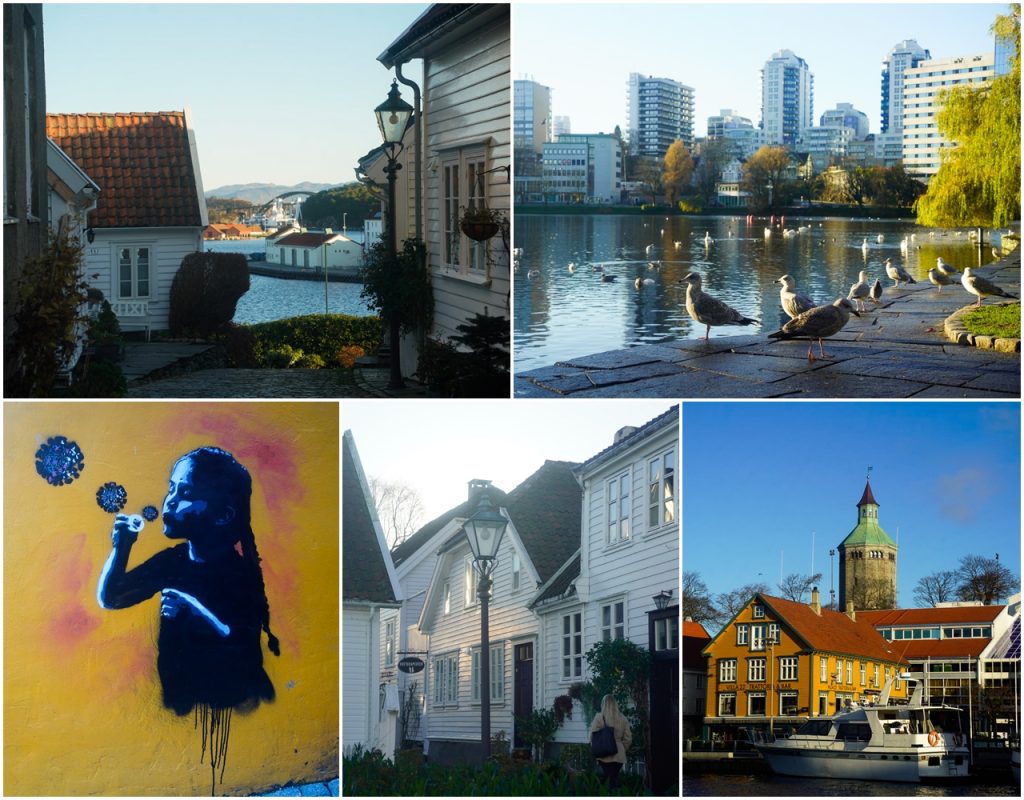
Jæren, Norway
Another one for the Norway list (that country is just too beautiful!). Jæren is a flat lowland area just south of Stavanger. Compared to the rest of the mountainous Norwegian coast, Jæren’s coast is very flat with sandy beaches and low dunes. It reminds me a lot of the west coast in Denmark, actually!
My friend who I was visiting there grew up with the natural beauty of Jæren as her backyard, so she wanted to show me around. Luckily, we had beautiful weather (in November!), and we had a lovely day out and about in the gorgeous nature. She showed me a beautiful view over her hometown of Undheim, took me for a stroll along the ocean to a gorgeous lighthouse with a small chapel inside it, and we watched the sunset at one of Jæren’s many beautiful sandy beaches.
I would love to return to Jæren one day; there are trails all over the low rocky hills and along the gorgeous coastline just waiting to be hiked.
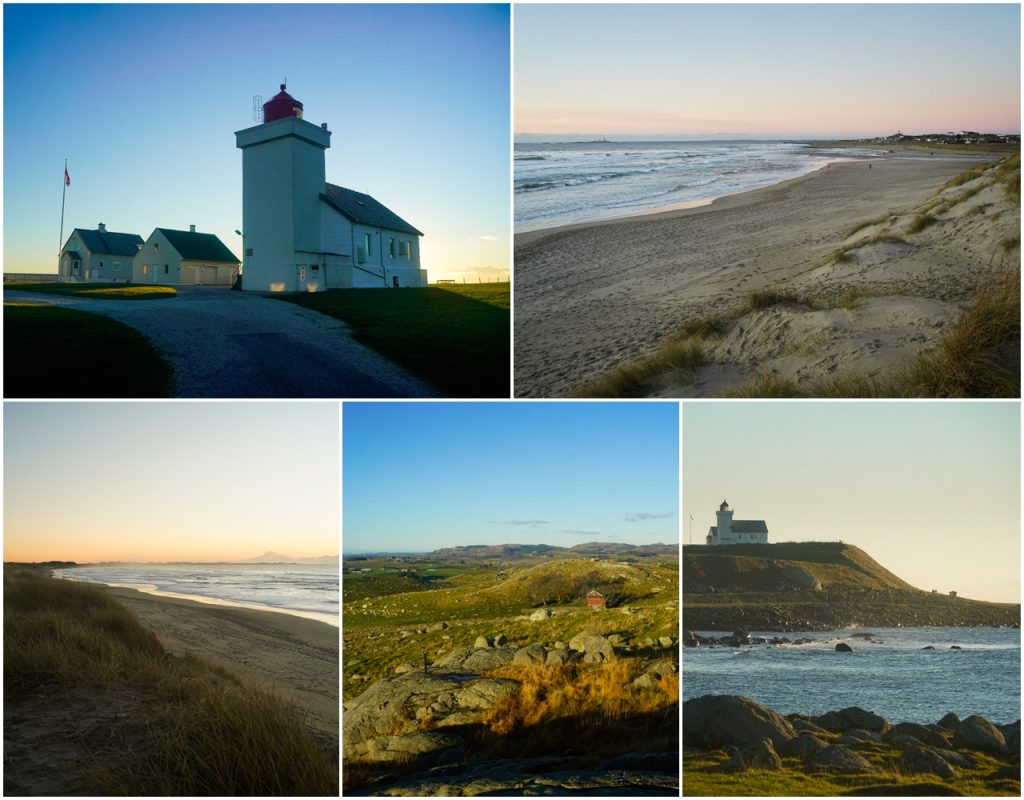
My top 5 favourite new places of 2021
Below are the places that truly spoke to my heart this year.
- Svaneti, Georgia
- Albuen, Lolland, Denmark
- Hirsholm, Denmark
- Tbilisi, Georgia
- Femø, Denmark
Other new places that I visited in 2021
- Danmark: Several places on Lolland and Falster, Farø, Bogø, Langø, Fejø, Skalø, Enehøje, Læsø and Strynø
- Austria: Paznaun Valley, Kitzbühel and St Johann in Tirol
- Georgia: Kazbegi, Kutaisi, Tskaltubo, Zugdidi and Mtskheta
- Armenia: Yerevan
- Czech Republic: Brno
- Serbia: Kikinda, Novi Sad and Fruška Gora National Park
- Germany: Leipzig, Boitzenburger Land and Potsdam
Leave a Comment
Pingback: My best travel moments of 2021 – I Live as I Dream on 14/01/2022
Pingback: My January-February 2022: Back to Lolland – I Live as I Dream on 14/01/2022
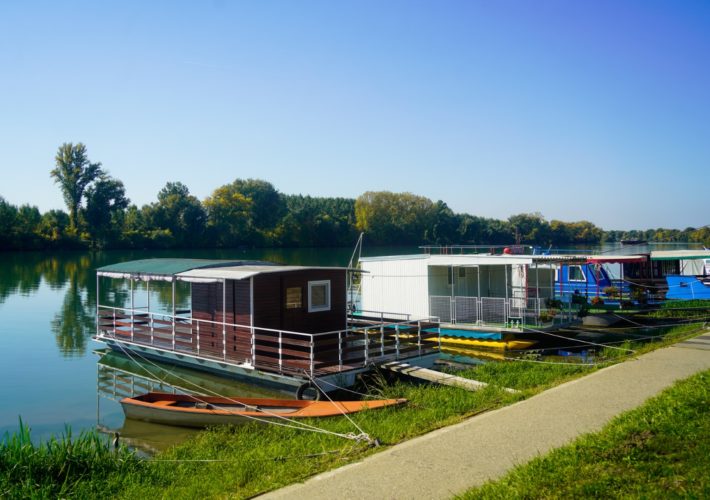
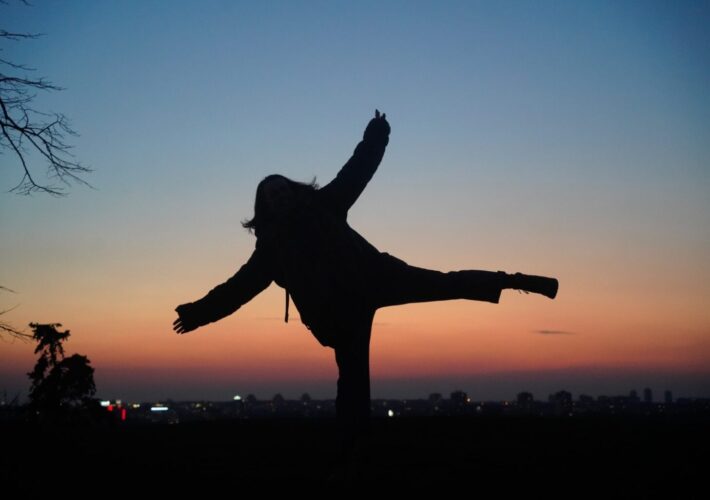

2 COMMENTS